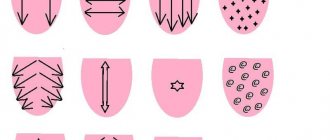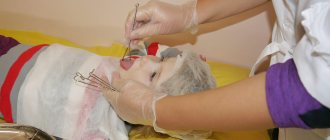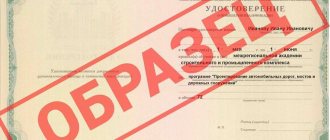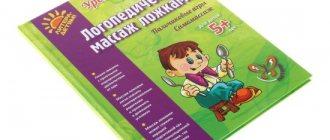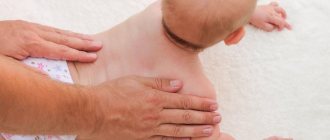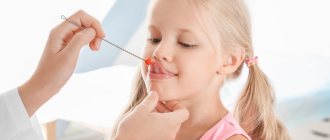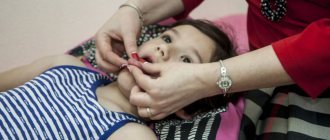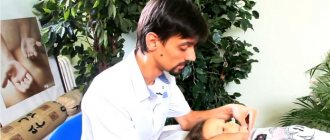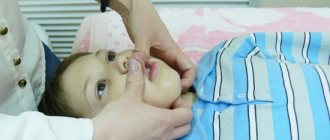One of the methods that a speech therapist uses in his work is probe massage. This procedure applies to:
- stimulation of speech motor skills;
- improving the muscle tone of the articulatory apparatus.
Special probes are used for massage. With the help of these tools, the speech therapist influences the labial muscles and tongue, cheeks, and soft palate by sliding, pressing, moving and rubbing. The described manipulations with individual areas of the articulatory apparatus lead to its improvement and restoration of proper functioning. But in addition to normalizing sound pronunciation, probe massage has a beneficial effect on the nervous system, which additionally stimulates the development of children's speech.
As before any medical procedure, probe massage requires a thorough speech therapy diagnosis, during which the facial and masticatory muscles that are part of the articulatory system, as well as the lips, cheeks, tongue and soft palate are examined. Based on the results of the examination, the location and extent of the lesion is determined, and the time required for treatment is specified. Preliminary diagnostics is also aimed at determining the most effective massage technique for taking into account all the characteristics of the patient and his speech impediment. The time it will take to eliminate deficiencies is influenced by the following factors:
- degree of severity of the defect;
- patient's age;
- his individual characteristics.
It should be noted that a neurologist (children's neurologist) refers to massage courses after a preliminary examination of the patient. And the speech therapist chooses a specific massage technique and its intensity.
What are speech therapy probes?
Probe massage, as the name suggests, is carried out using special metal instruments. They should not be confused with Rau probes, which are used to produce sounds.
The author of the massage complex is E.V. Novikova, who received a patent for her development in 2000.
The set of probes includes 8 main and 4 additional probes with specific functionality. Various types of probe effects on the affected areas stimulate sensitivity and improve connections between peripheral organs and the cerebral cortex.
The tools are used to work with articulatory organs and the forearm. Massage areas are selected individually, depending on what the patient complains about. With the help of probes, you can relax the facial muscles and increase their tone, get rid of spasms. And the impact on the muscles of the leading hand develops motor skills and helps in the formation of handwriting.
Since 2000, technology has not stood still, and some specialists have made their own improvements. For example, famous speech therapists T.A. Vorobyov and O.I. Krupenchuk developed their own version of 9 instruments.
VIVO CLINIC specialists use massage speech therapy probes from all authors in their work, selecting individual sets of tools based on the goals and objectives of correction.
Symptoms of pathology
You should know the first signs of stuttering in order to consult a doctor in time.
- The child suddenly becomes silent and may not speak for several hours to days. Then he begins to speak, but stuttering. If you consult a specialist before your baby starts talking again, you can avoid stuttering.
- Repetition of the first syllables, words at the beginning of a phrase.
- Stopping in the middle of a word or phrase.
- Inclusion of extra sounds (i, a) before some words.
- Difficulty starting a conversation.
Symptoms of stuttering in children are:
- Stumbling on a sound or syllable due to a spasm of the speech apparatus (mm-m-m-m-mama, ma-ma-typewriter).
- Long pauses between sounds, stretching (boy.....boy).
- The appearance of a nervous tic, disturbances in sleep, appetite, digestion, and enuresis may occur.
- Increased tearfulness, nervousness, aggressiveness. If you can’t pronounce a word, the child gets worried and may cry.
- Tendency to withdraw into oneself, difficulties in communication, fear of ridicule.
If symptoms are detected, it is necessary to find out the cause of the pathology and find a way to rid the child of stuttering.
In what cases will speech therapy probe massage help?
- for motor alalia, when the child has a delay in speech development and needs a powerful push to “start” speech. The purpose of massage is to improve the flow of signals into the brain for the development of affected areas. After the procedure, the patient will begin to make onomatopoeia.
- for dysarthria (pronunciation disorder caused by impaired innervation of the articulation organs), including cerebral palsy. Muscle tone is normalized, the conductivity of nerve impulses improves.
- for stuttering, to reduce the tone of the articulator muscles.
- used in the rehabilitation of lost speech functions in adult patients who have suffered acute cerebrovascular accident. The pronunciation aspect of speech improves, the tone of the affected muscles is normalized, hypersalivation is reduced, chewing and swallowing are improved.
- with hypersalivation (increased salivation) at any age.
- with impaired swallowing and chewing.
- with limited mobility of the tongue due to shortening of the hyoid ligament. For mild impairment, massage will improve its elasticity. If the lifting disorder is more severe, surgical intervention will be required.
- with rhinolalia. Speech therapy massage will smooth out scars that negatively affect the mobility of organs, postoperative sutures, and improve muscle function.
Causes
We will list the most common causes of stuttering in children aged 3 to 5 years. This pathology can occur for a number of reasons, be congenital or acquired.
Congenital factors for the development of the defect include:
- Various types of pathologies during pregnancy and gestation (oxygen starvation, infectious processes, etc.).
- Problems during the birth period (injuries, early birth, etc.).
- Genetic predisposition along one of the lines of kinship.
- Individual personality characteristics, characteristics of the nervous system (predominance of excitability processes, hyperanxiety).
Acquired stuttering is provoked by:
- Shock trauma. Death of a parent or significant loved one. Chronic stress.
- Psychological trauma. Physical or psychological abuse. Bullying. Humiliation from peers or family.
- Physiological processes. Features of the development of the child’s cerebral hemispheres; this reason can be exclusively an age-related feature and resolve itself as the child grows up.
- Past illnesses. One of the causes of speech impairment can also be previous infectious diseases (meningitis, encephalopathy, etc.). Seasonal acute respiratory viral infections, influenza and other upper respiratory tract diseases. Speech may also be impaired due to various types of injuries, bruises, concussions due to falls or accidents. Diagnosed diabetes mellitus can also cause stuttering in children.
- False stuttering. This kind of stuttering can be inherited from one of your loved ones. In this case, the child may not have true pathologies. This type of stuttering is especially typical for young children who are at the age of learning speech through copying.
- Attempts to retrain a child to be left-handed. Attempts to forcefully teach a left-handed child to write with his right hand can cause severe disturbances in the child’s speech. Children who write with their left hand are quite sensitive and sensitive.
- An alarming situation at home. Contemplating conflict situations between family members can negatively affect the child’s nervous system, resulting in speech impairment in the form of stuttering.
- Authoritarian parenting. Violation of a child's personal boundaries, physical punishment and intimidation of a child often cause logoneurosis.
- Mental fatigue. Tasks beyond the child’s strength, without taking into account the child’s age capabilities, both physical and mental. The predominance of educational activities over gaming. An overabundance of section clubs, a lack of time and free space for the child’s self-organized activities.
- ·Disturbance of sleep patterns, lack of sleep.
Among the causes of stuttering there are a number of psychosomatic factors that cause stuttering:
- · Hysterical type: a sharp change in conditions in a social situation (for example, in the family everyone was allowed to do whatever he wanted, but when he went to kindergarten, the child was faced with prohibitions, restrictions and rules);
- Neurasthenic type: humiliation of the child’s personality and characteristics, lack of praise, comparison with other children;
- Psychasthenic type: parental overprotection, devaluation and lack of faith in the child that he can cope and succeed, can also lead to reluctance to speak and severe disturbances in the child’s speech.
Are there any contraindications for probe massage?
Contraindications can be temporary or absolute.
Temporary contraindications:
- heat;
- poor health, general fatigue;
- nausea and vomiting;
- high blood pressure;
- skin rashes;
- any infectious diseases;
- oral infections, rashes on the oral mucosa (stomatitis, gingivitis);
- dental problems (caries, periodontal disease, etc.);
- viral diseases, such as herpes.
After the disappearance of the above reasons, it is possible to perform a massage complex.
Absolute contraindication:
- all types of epilepsy (massage can cause an epileptic seizure).
How is massage performed?
The massage session is carried out lying down or in any other comfortable position that will allow you to relax as much as possible. In some cases, the mother may be present in the office.
The speech therapist selects methods of influencing the muscles in each case individually, after examining the condition of the articulatory apparatus.
A specialist performs speech therapy massage only wearing special disposable gloves, a medical gown and only sterile instruments . All equipment undergoes mandatory medical sterilization after each lesson.
How often is massage performed?
Typically, speech therapy massage is usually carried out in courses, the number and frequency of which are prescribed by a speech therapist or supervising doctor. Their duration is selected individually for each patient. The average number of procedures is usually around 10, lasting from 5 to 25 minutes. There is a month's break between courses. Most often, it takes 3-4 courses to see results, but sometimes one is enough. It is important to remember that the result will appear only if the courses are regular.
The duration of the procedure is influenced by the patient’s age, the degree of damage and individual characteristics.
For example, some speech therapists prefer to preface the session with a massage before all their classes.
Disease prognosis
With timely consultation with a specialist and proper treatment, stuttering is cured in 70-80% of cases. Age plays a role - the defect can be easily corrected in children 3-5 years old. The earlier the problem is identified, the greater the chances of a positive result. Stuttering in school-age children is more difficult to deal with. A less favorable prognosis for the treatment of advanced pathology in children 9-11 years old. Source: https://www.ncbi.nlm.nih.gov/pmc/articles/PMC5257259/ Anne Smith, Ph.D. and Christine Weber Childhood Stuttering – Where are we and Where are we going? // Semin Speech Lang. 2021 Nov; 37(4): 291–297
What are the advantages and disadvantages of probe speech therapy massage?
Advantages:
- acceleration of sound production;
- development of motor skills;
- improvement of muscle function;
- increased tone;
- hypersalivation;
- No complex equipment or special conditions are required to carry out the procedure.
Perhaps there is only one drawback: probe massage cannot be used as the only means of combating speech disorders. Treatment of severe speech disorders may take 3-4 years and will require a combination of various methods: physical and drug therapy, massages (speech therapy and general), regular visits to a therapist and psychologist (the result of which should be the development of speech at all levels, the development of motivation and development higher mental functions).
Self-massage
A specialist can teach children self-massage skills. This doesn't require much effort. Preschoolers are taught in front of a mirror, shown an example of an action and asked to repeat:
- The first exercise is to gently stroke your cheeks with your palms, working from your nose to your ears. You can stroke the head, going lower from the hair.
- The second exercise is to run your fingers with pressure from the middle of the forehead to the temples, as if drawing paths. You can draw a “Christmas tree”.
- The third exercise is tapping the forehead and cheeks with pads. There may be more exercises. The complex is compiled by a speech therapist based on the individual characteristics of the child.
Krupenchuk has her own method. She improved the Dyakova complex. Regular spoons are used for massage - this is perceived more positively by the child.
The process can be combined with games. In this case, it will be more interesting for children to complete the tasks of the speech therapist. As an incentive, you can give a sticker or the opportunity to choose a game.
Are there any other “tricks” when performing a massage?
The child is introduced to the probes gradually, non-violently, which is also the key to success. The child needs encouragement.
For an adult patient, the mechanisms of action of a particular technique are explained, rational psychotherapy takes place, and the final result is visualized.
It is important to know that in inept hands massage can cause unpleasant sensations and reverse reactions of muscles (increased tone), injury to the frenulum, increased gag reflex, etc. The condition for the positive effect of massage is the individual choice of technique for influencing the muscle, which will be provided by someone specially trained in this. speech therapist. So entrust its execution to professionals.
VIVO CLINIC offers speech therapy probe massage services. You can make an appointment with a speech therapist on the website at a convenient time. We are waiting for you at the reception!
Stuttering in a 3 year old child
If you notice that your 3 year old child is stuttering, you should follow these instructions:
- It is necessary to make sure that the child speaks less, try not to ask him unnecessary questions - to which you want to hear the answer! If a child asks you about something, you need to answer him;
- if you have the opportunity to refuse to attend kindergarten, be sure to do so and avoid crowds of people;
- keep your child busy with board and other entertaining games, they perfectly develop fine motor skills and calm the nervous system;
- Be sure to contact a good children's speech therapist and neurologist.
The main thing is not to overload the child - this can negatively affect him, it is necessary to take the necessary measures from the first manifestations.
